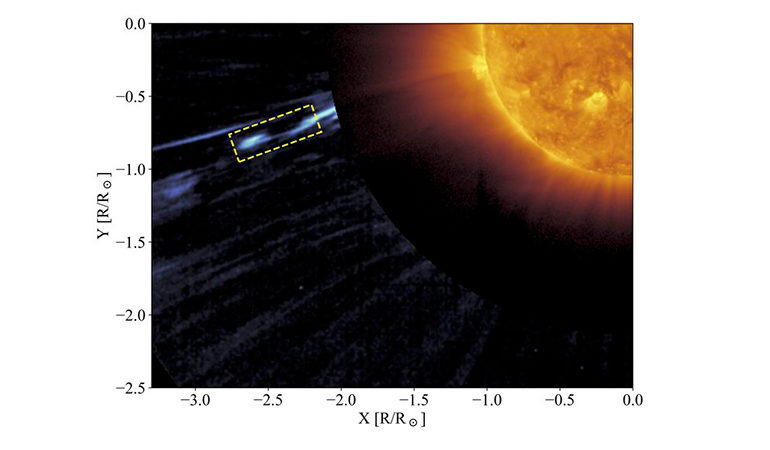The European Space Agency’s Solar Orbiter has taken the first-ever image of a solar switchback in the corona (boxed), confirming Dr. Gary Zank’s theory of switchback origin.
By Lee Roop | lroop@al.com
European scientists have confirmed an Alabama astrophysicist was right two years ago with his models of strange spikes in the solar wind, the stream of protons and electrons coming from the Sun’s outmost “atmosphere” or corona.
Dr. Gary Zank of the University of Alabama in Huntsville and his team came up with the explanation for the spikes – or kinks – in solar emissions in 2020, and the European Space Agency’s Solar Orbiter spacecraft has now “seen” them. The phenomenon is called a “solar switchback” and this is the first time it has been directly observed.
Six times faster than a Category 5 hurricane and “super hot,” the solar wind “smacks” the Earth’s atmosphere when it happens, as one NASA scientist put it. Not enough is known about it – one reason the Solar Orbiter is there – but we know it is “responsible for triggering those majestic auroras typically seen at locations close to our north and south poles,” NASA says. “In some cases it can also set off space weather storms that disrupt everything from our satellites in space, to ship communications on our oceans, to power grids on land.”

